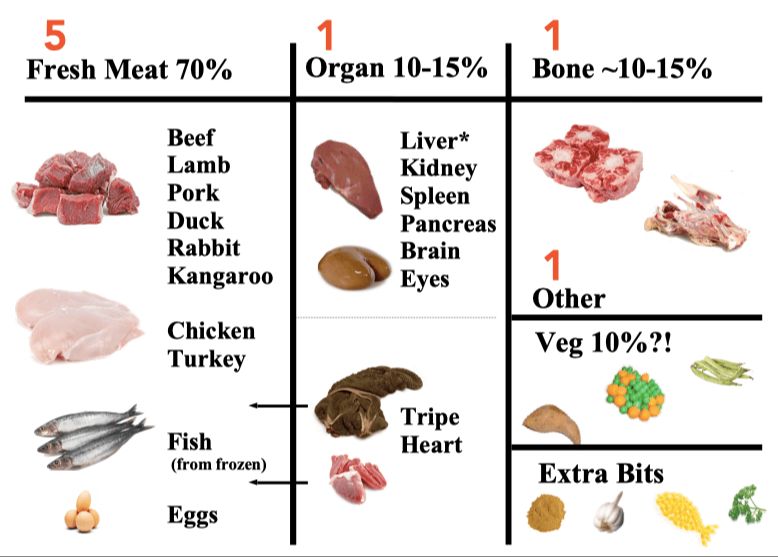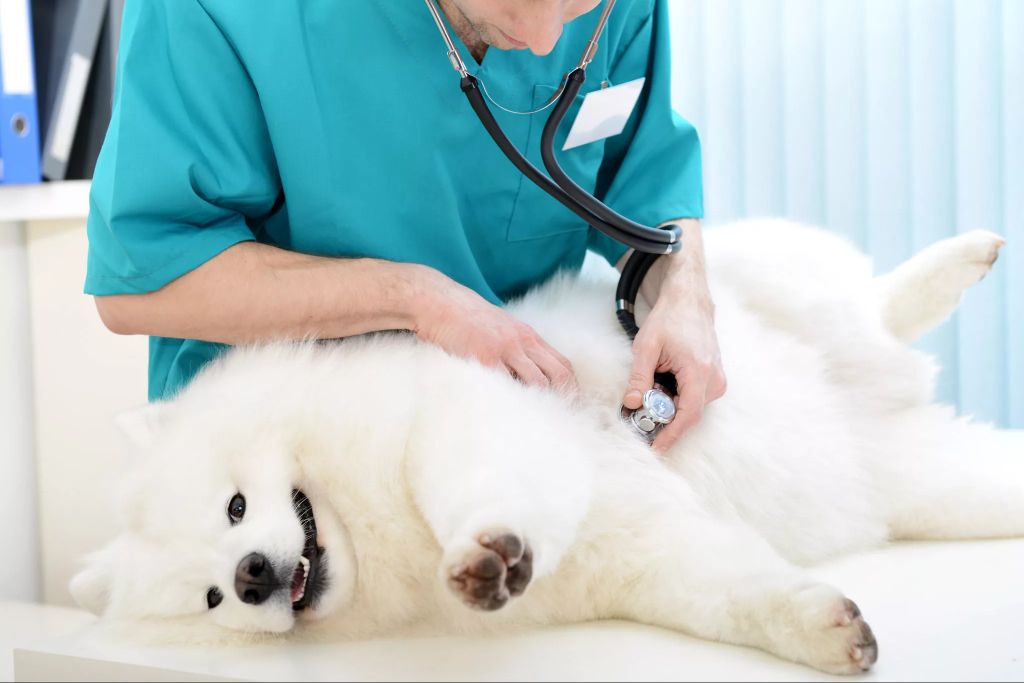Introduction
During the 45th day of pregnancy, female dogs undergo important physical and behavioral changes as they prepare to give birth. This stage marks a critical time period when puppies continue developing rapidly in the womb. Female dogs require special care and attention during this time to ensure the health of both mother and puppies.
This article will provide an overview of what to expect during the 45th day of a dog’s pregnancy. We will cover physical and behavioral signs, nutritional needs, veterinary care, preparing a whelping area, signs of impending labor, potential complications, and tips for caring for a pregnant dog at this late stage.
Physical Changes
By 45 days into a dog’s pregnancy, there are some notable physical changes occurring. The most noticeable change is enlargement of the mammary glands. The nipples become pinker and more prominent, and the mammary glands will enlarge significantly in preparation for producing milk for the puppies. Many dogs will develop an opaque fluid discharge from the nipples around 30-35 days into pregnancy. The dog’s abdomen will also become noticeably distended and enlarged as the puppies grow and take up more room. An obviously swollen abdomen is usually an obvious visual clue that a dog is pregnant. Some dogs may exhibit slight abdominal enlargement prior to 45 days, but it often becomes very noticeable at this stage. The swelling occurs on the dog’s sides and around the genital area as the uterus expands. An x-ray can confirm the number of puppies present at this stage.
In addition to mammary and abdominal changes, a pregnant dog’s vulva will begin to relax in preparation for whelping around 40-45 days into pregnancy. As referenced in the article from Chewy, pregnant dogs will often start to lose hair around the nipples and abdomen to allow easier access for nursing. Some swelling of the vulva may be noticeable as well. All of these physical changes are normal and indicate the dog’s body is preparing for the demands of nursing her litter after birth.

Behavioral Changes
There are several behavioral changes to expect in a pregnant dog starting around day 45. These changes are due to hormonal fluctuations and the dog’s instinct to prepare for her puppies.
One of the most notable behavioral changes is nesting. The pregnant dog may start gathering items like towels, clothes, or papers and arranging them into a nest. She is beginning to seek out a safe, comfortable space for delivering and caring for her puppies. The nesting instinct will increase as she gets closer to labor.
Many pregnant dogs also experience changes in appetite around this time. Their appetite may increase to support the developing puppies. Make sure she has access to quality puppy food and feed her as much as she wants. Do not restrict her diet during pregnancy. Some dogs become less active and more lethargic in the late stages of pregnancy. Let her rest as needed.
Hormones may make some pregnant dogs more affectionate and clingy as labor approaches. They may want more attention, petting, and time near their owners. On the other hand, some dogs become irritable or withdrawn right before labor due to discomfort or instinct. Monitor her behavior and provide a stress-free environment. If any concerning behavioral changes arise, consult your veterinarian.
Sources:
https://www.molecarepetvets.com/wp-content/uploads/2019/08/PREGNANCY-IN-THE-BITCH.pdf
Nutritional Needs
By 45 days of pregnancy, a dog’s nutritional needs are significantly increased compared to normal. At this stage, puppies are rapidly growing in the uterus and drawing large amounts of nutrients from the mother dog. According to the VCA Animal Hospitals, a pregnant dog may need up to 4 times the normal number of calories by 3-5 weeks after whelping to support fetal growth and milk production (https://vcahospitals.com/know-your-pet/feeding-the-pregnant-dog).

It is important to feed a high quality puppy food formulated for growth, as recommended by Purina (https://www.purina.co.uk/articles/dogs/health/pregnancy/feeding-your-pregnant-dog). Puppy foods provide more calories, protein, calcium, and other key nutrients. Avoid empty calories and ensure the diet is nutrient-dense. Some owners supplement with protein-based treats as well, according to PetMD (https://www.petmd.com/dog/nutrition/what-to-feed-pregnant-dogs).
It’s ideal to transition the pregnant dog to a puppy food diet by the 4th or 5th week of pregnancy. Follow the feeding guidelines on the puppy food package and monitor the dog’s body condition. Increase quantities if she seems too thin. Providing proper nutrition will support the health of the mother dog and developing puppies at this critical stage.
Veterinary Care
Regular veterinary care is very important for pregnant dogs during their 45 days of gestation. At around 25-28 days into the pregnancy, it’s recommended to have an ultrasound done to confirm the pregnancy and check on the health and development of the puppies (Source). An ultrasound allows the vet to get an accurate count of how many puppies to expect. Around 45 days, abdominal x-rays can provide additional information (Source).

Other key vet appointments during pregnancy include a general wellness check at 30 days where the vet may confirm pregnancy through bloodwork (Source). The vet will also check the dog’s weight, body condition, heart, lungs, and temperature. At 45 days, the vet will check for any pregnancy complications and prepare a birthing plan. They can estimate delivery timing and advise on any necessary supplies. Regular checkups ensure the health of both mom and puppies.
Preparing a Whelping Area
Preparing a dedicated whelping area for your pregnant dog is an important part of getting ready for the big event. Here are some tips on preparing the space and gathering supplies:
Choose a quiet, calm room in your home, such as a spare bedroom or large bathroom. The whelping area should be in an area isolated from other pets and high traffic zones. Make sure the room is easy to thoroughly clean and disinfect. The area should also have access to electricity and good ventilation.
Cover the floor with washable, absorbent material such as puppy pads, shower curtains, or tarpaulin. Some breeders recommend using pee pads layered on top of vinyl tablecloths for easy clean up. Do not use old blankets, comforters or towels, as they are difficult to sanitize between litters. Change bedding and disinfect surfaces regularly.
Set up a whelping box or nesting area filled with washable bedding. The box should be large enough for the mother to lie down and tend to puppies, with sides low enough for her to enter/exit easily. Offer two boxes so she can choose or move between them.
Gather supplies like extra bedding material, towels, non-latex gloves, disinfectant, gauze, dental floss, scissors, thermometer, heating pad or lamp, water and nutritious food for mom. Have the vet’s number handy. Sterilize instruments that may be used during delivery.
The week before delivery, take the mom’s temperature twice daily. This will help pinpoint signs of impending labor. Monitor food intake and watch for nesting behavior like shredding bedding as the birth approaches.

With some preparation and supplies, you’ll be ready to welcome the puppies into a safe whelping environment. Consult your vet if you have any concerns leading up to the big day.
Signs of Impending Labor
In the final days and hours before a pregnant dog goes into labor, you’ll notice some changes and signs indicating labor is approaching. One of the most notable signs is nesting behavior, where the mother dog may start gathering towels, blankets or other soft material and arranging them into a nest where she plans to deliver her puppies. She will also start looking for quiet, secluded spaces to create her nest.
Another sign is a drop in body temperature, which typically occurs about 24 hours before labor begins. A dog’s normal temperature is 101-102.5°F, but it will drop to 99°F or lower right before whelping. You can monitor her temp by taking rectal readings a few times per day as her due date approaches.
Some pregnant dogs also become very restless and anxious in the final stage before labor. You may notice panting, pacing, lack of appetite and other signs of stress. She may want more attention and comfort from you or the opposite, seeking solitude and privacy for the upcoming delivery.
Right before whelping, the mother dog’s abdomen and mammary glands will enlarge. You may notice enlarged or leaking nipples and increased licking of her rear and genital area. She may vomit as well due to anxiety. All of these are normal signs that labor is about to start.
Potential Complications
While most pregnancies in dogs go smoothly, there are potential complications to be aware of. One such complication is pregnancy toxemia, which typically occurs in the last 2-3 weeks of pregnancy. It is caused by a disruption in carbohydrate metabolism resulting in low blood sugar levels. Symptoms include lethargy, lack of appetite, vomiting, and seizures. If your dog shows any of these signs, contact your veterinarian immediately as this condition can be fatal if left untreated.
Other complications that may arise include dystocia, where the puppy gets stuck in the birth canal during labor. Signs of this include strong contractions with no puppy being produced. An emergency C-section is often required in these cases. Additionally, issues like premature placental separation, miscarriage, stillborn puppies, and uterine infections are possibilities. Monitoring your pregnant dog closely and watching for any abnormalities is key. Don’t hesitate to call your vet if you have any concerns.
Some references on complications in canine pregnancy:https://animalemergencycare.net/what-to-expect-when-your-expecting-pet-has-pregnancy-complications/
https://vcahospitals.com/know-your-pet/miscarriage-in-dogs
Caring for the Pregnant Dog
Proper care of a pregnant dog is crucial to ensure the health of both the mother and her puppies. Here are some tips for caring for a pregnant dog:
Exercise is still important during pregnancy, but should be gentle. Take her on short, frequent walks to keep her muscles toned and avoid obesity. Swimming is an excellent low-impact exercise if available. Avoid strenuous activities that could cause injury.
Continue socializing your pregnant dog to keep her comfortable around people and other pets. Introduce her to any visitors before allowing contact. Supervise interactions with rambunctious pets to prevent accidental injuries.
Groom your dog frequently to keep her coat and skin healthy. Be gentle around the abdomen, teats, and vulva. Brush her teeth and trim her nails often. Clean her ears gently to avoid introducing infection.
Feed a high quality puppy food diet and monitor her weight. Separate food for other pets to ensure she eats enough. Divide meals into smaller, more frequent portions if she has nausea. Keep plenty of fresh water available at all times.
Prepare a quiet nesting area for her to whelp in with easy access to go outside. Provide bedding that can be easily washed like blankets or towels. Limit stressors and monitor for signs of impending labor as her due date approaches.
Conclusion
The final weeks of a dog’s pregnancy are an exciting and critical time. Regular veterinary check-ups, preparing a proper whelping area, and monitoring for signs of labor will help ensure the health of the mother dog and her pups. Diet and nutrition needs will increase substantially, as puppy growth accelerates in the last trimester. Providing high quality food and supplements is important. The pregnant dog may exhibit nesting behaviors and changes in appetite in the final days before labor. However, abnormal discharge or distress requires prompt veterinary attention. With proper care and vigilance, dog owners can support their pregnant pet through the last critical weeks and prepare for a smooth delivery.
Most importantly, partnering with an experienced veterinarian throughout pregnancy allows dog owners to closely monitor their pet’s health, identify potential issues early, and intervene if complications arise. While most dogs have normal pregnancies, risks do exist. By keeping up with prenatal veterinary visits, having emergency contact numbers, and knowing the signs of trouble, dog owners can ensure the best chance for healthy mother and puppies.